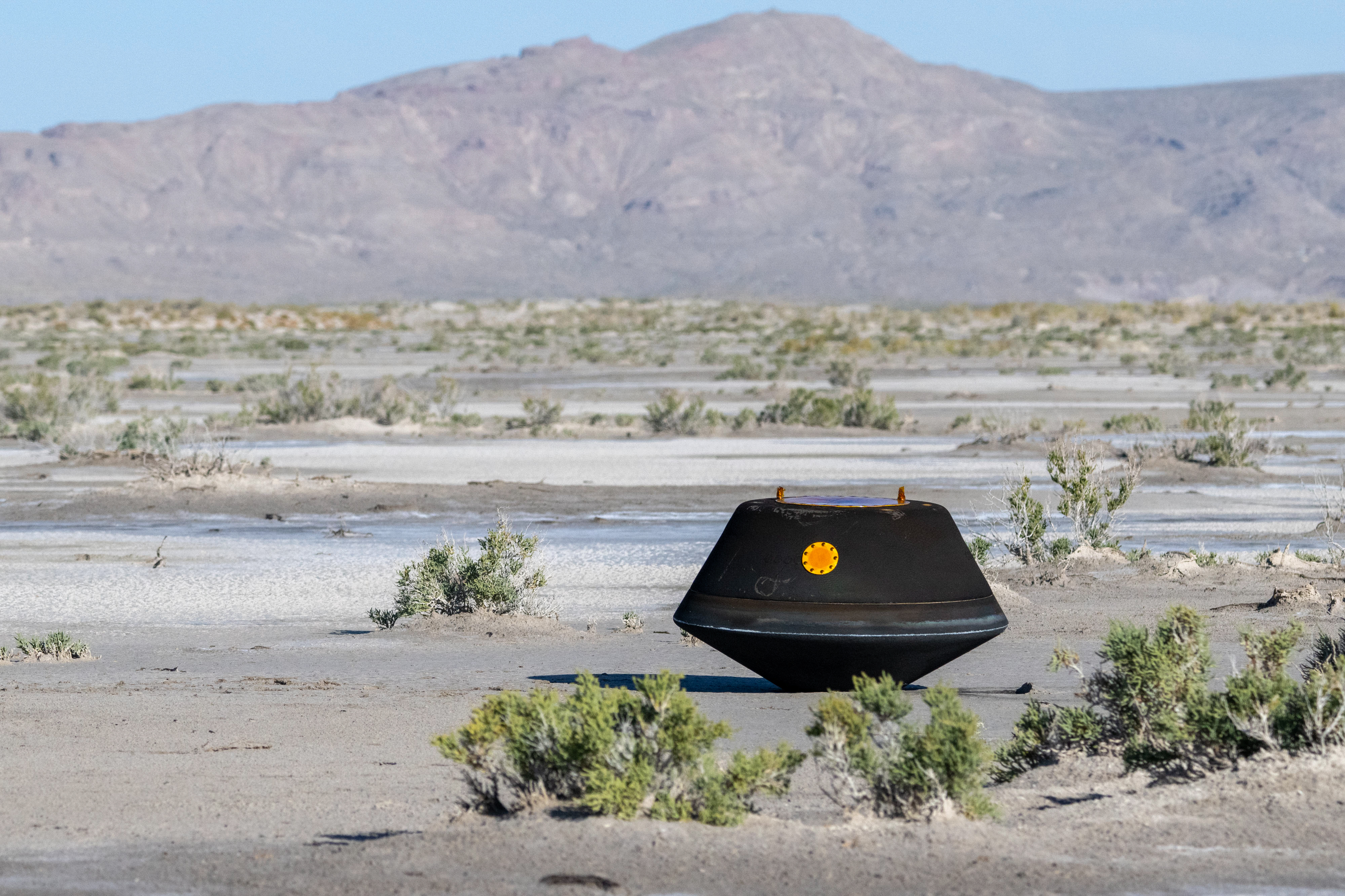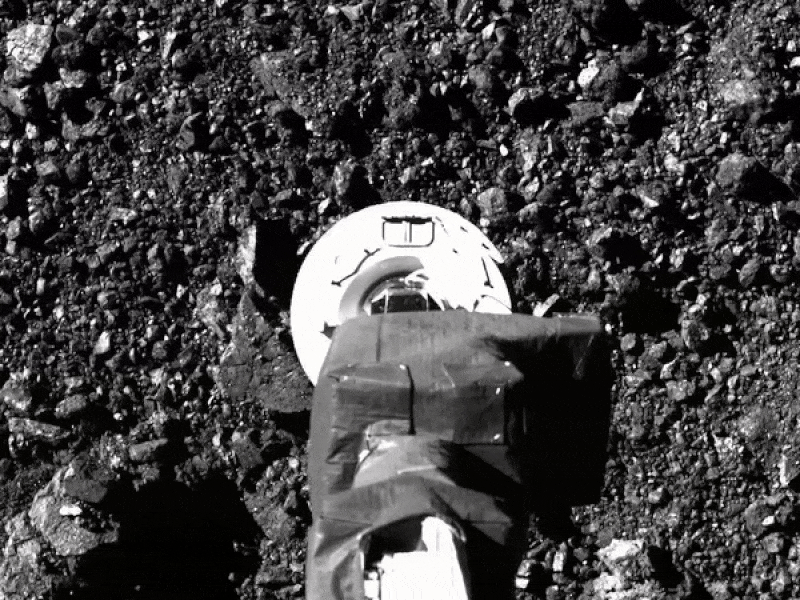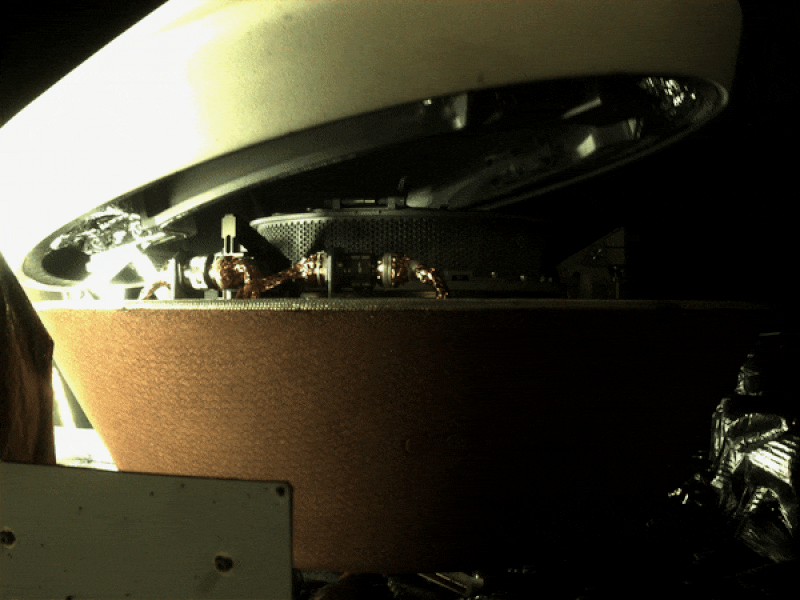OSIRIS-REx
In Depth
Summary
The Origins, Spectral Interpretation, Resource Identification, and Security – Regolith Explorer (OSIRIS-REx) was the first U.S. spacecraft to collect a sample from an asteroid and deliver it to Earth on Sept. 24, 2023.
After the delivery, OSIRIS-REx was renamed OSIRIS-APEX (OSIRIS-Apophis Explorer) and departed for an extended mission to asteroid Apophis, which it will reach in 2029.

Nation | United States of America (USA) |
Objective(s) | Collect an asteroid sample and deliver it to Earth |
Spacecraft | Origins, Spectral Interpretation, Resource Identification, and Security – Regolith Explorer (OSIRIS-REx) / OSIRIS-APophis EXplorer (OSIRIS-APEX) |
Spacecraft Mass | 4,650 pounds (2,110 kilograms) |
Scientific Instruments | Camera Suite (PolyCam, MapCam, SamCam) (OCAMS OSIRIS-REx) Laser Altimeter (OLA OSIRIS-REx) Visible and IR Spectrometer (OVIRS OSIRIS-REx) Thermal Emission Spectrometer (OTES OSIRIS-REx) Regolith X-ray Imaging Spectrometer (REXIS OSIRIS-REx) Touch-And-Go Sample Acquisition Mechanism (TAGSAM) |
Mission Design and Management | NASA's Goddard Space Flight Center / University of Arizona |
Launch Vehicle | Atlas V 411 (no. AV-067) |
Launch Date and Time | Sept. 8, 2016 / 23:05 UT |
Launch Site | Cape Canaveral, Fla. / SLC-41 |
Key Dates
- Sep. 8, 2016: OSIRIS-REx launches
- Dec. 3, 2018: Arrives at asteroid Bennu
- Oct. 20, 2020: Collects a sample from Bennu
- April 7, 2021: Completes its last flyover of Bennu
- May 10, 2021: Begins its journey back to Earth
- Sep. 24, 2023: Sample capsule delivered to Earth
- 2029: Spacecraft to enter orbit around asteroid Apophis
Firsts
OSIRIS-REx was the first U.S. mission to collect a sample from an asteroid and deliver it to Earth.
In Depth
OSIRIS-REx was the third major planetary science mission for NASA’s New Frontiers Program (after New Horizons launched in 2006 and Juno launched in 2011).
OSIRIS-REx is an acronym for "Origins, Spectral Interpretation, Resource Identification, and Security – Regolith Explorer" The goal of the mission was to collect a sample from near-Earth asteroid 101955 Bennu (formerly known as 1999 RQ36) and then bring the sample to Earth. The mission was successful.
The mission, developed by scientists at the University of Arizona, will give us more information about how the early solar system formed and how life began. It will also help us better understand asteroids that could impact Earth in the future.
About 55 minutes after launch on Sept. 8, 2016, from Cape Canaveral, Florida, and after a boost by the Centaur upper stage, OSIRIS-REx separated from its Atlas V rocket and deployed its solar arrays.
At 17:30 UT on Sept. 9, 2016, the spacecraft crossed the orbital path of the Moon at a range of about 240,200 miles (386,500 kilometers). Three days later, it was in orbit around the Sun. Beginning Sept. 19, 2016, the mission team activated all of its scientific instruments.
The spacecraft’s trajectory correction maneuver (TCM) thrusters were fired for 12 seconds for the first time on Oct. 7, 2016, for a course correction. The spacecraft also carries three other sets of thrusters—the attitude control system (ACS), the main engine (ME), and low thrust reaction engine assembly (LTR) thrusters—thus providing significant redundancy for maneuvers.
On Dec. 28, 2016, the spacecraft conducted its first deep-space maneuver (DSM-1), firing the main engine to position it properly for an Earth gravity-assist encounter in late 2017.
A second firing, the first to use the spacecraft’s attitude control system ACS thrusters, on Aug. 25, 2017, further sharpened its trajectory by changing the velocity by about 19 inches (47.9 centimeters) per second.
About a month later, on Sept. 22, 2017, OSIRIS-REx passed Earth at a range of about 10,710 miles (17,237 kilometers) as part of a gravity-assist maneuver that tilted its orbit to match that of Bennu. During the encounter, the spacecraft took several high-resolution pictures of both Earth and the Moon.
The spacecraft got its first glimpse of Bennu in August 2018, sending back a grainy image taken at a distance of about 1.4 million miles (2.3 million kilometers). In early November 2018, OSIRIS-REx sent back detailed images showing the asteroid’s shape and some surface features.
After arriving at Bennu on Dec. 3, 2018, OSIRIS-REx mapped the asteroid in detail while the mission team searched for a safe sample-collection site. One of the biggest challenges was that Bennu has an extremely rocky surface with hazardous boulders.
After a year, the mission team selected a sample site called “Nightingale” located in a northern crater 460 feet (140 meters) wide. The crater is thought to be relatively young, and the regolith, or rocks and dust, is freshly exposed. This means the site would likely allow for a pristine sample of the asteroid, giving the team insight into Bennu’s history.

On Oct. 20, 2020, OSIRIS-REx unfurled its robotic arm and, in a first for NASA, briefly touched down on asteroid Bennu to collect dust and pebbles from its surface in a maneuver known as “Touch-And-Go” or TAG.
Two days later, the mission team received images that confirmed the spacecraft had collected more than enough material to meet one of its main mission requirements: acquiring at least 2 ounces (60 grams) of Bennu’s surface material. On Oct. 28, 2020, the mission team sent commands to the spacecraft instructing it to close the sample capsule – marking the end of one of the most challenging phases of the mission.

On April 7, 2021, OSIRIS-REx completed its last flyover of Bennu and started slowly drifting away from the asteroid. During the flyby, OSIRIS-REx imaged Bennu for 5.9 hours, covering more than a full rotation of the asteroid. It flew within 2.1 miles (3.5 kilometers) of Bennu's surface – the closest since the TAG sample collection event.
Images taken during the flyover revealed the aftermath of its historic encounter with the asteroid.
On May 10 at 4:23 p.m. EDT, the spacecraft fired its main engines at full throttle for seven minutes – its most significant maneuver since it arrived at Bennu in 2018. This burn thrust the spacecraft away from the asteroid at 600 miles per hour (nearly 1,000 kilometers per hour), setting it on a 2.5-year cruise toward Earth.
After orbiting the Sun twice, OSIRIS-REx reached Earth on Sept. 24, 2023. The capsule containing pieces of Bennu separated from the rest of the spacecraft and entered Earth’s atmosphere. The capsule parachuted to the Department of Defense's Utah Test and Training Range in Utah's West Desert, where scientists retrieved it.
When it delivered the sample of asteroid Bennu to Earth, the OSIRIS-REx spacecraft had completed its primary mission. But the spacecraft, didn't land back on Earth. It is continuing on to a new mission. With a new name – OSIRIS-APEX (OSIRIS-Apophis Explorer) – the spacecraft will explore Apophis, an asteroid roughly 1,200 feet (roughly 370 meters) in diameter that will come within 20,000 miles (32,000 kilometers) of Earth in 2029.
What the Name Means
O - Origins
Return and analyze a sample of a pristine carbon-rich asteroid to study the nature, history, and distribution of its minerals and organic material.
SI - Spectral Interpretation
Define the global properties of a primitive carbon-rich asteroid to allow for direct comparison with existing ground-based telescopic data for all asteroids.
RI - Resource Identification
Map the global properties, chemistry, and mineralogy of a primitive carbon-rich asteroid to define its geologic and dynamic history and provide context for the returned sample.
S - Security
Measure the Yarkovsky Effect on Bennu and learn which asteroid properties contribute to this effect.
The Yarkovsky Effect is the force caused by the emission of heat from a rotating asteroid that can change its orbit over time.
REx - Regolith Explorer
Document the texture, morphology, geochemistry, and spectral properties of the regolith (surface material) at the sampling site.
Additional Resources
Key Source
Siddiqi, Asif A. Beyond Earth: A Chronicle of Deep Space Exploration, 1958-2016. NASA History Program Office, 2018.
